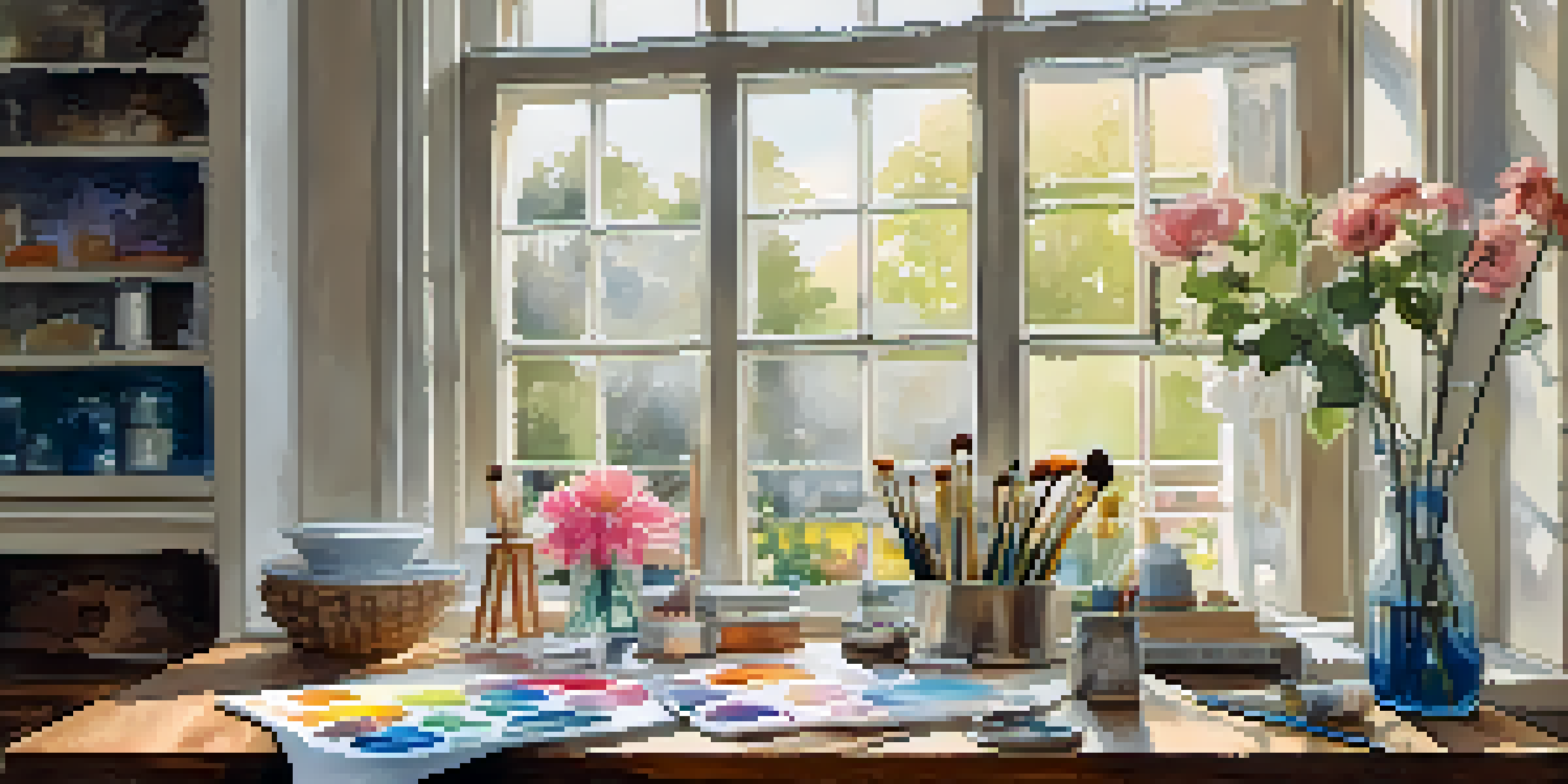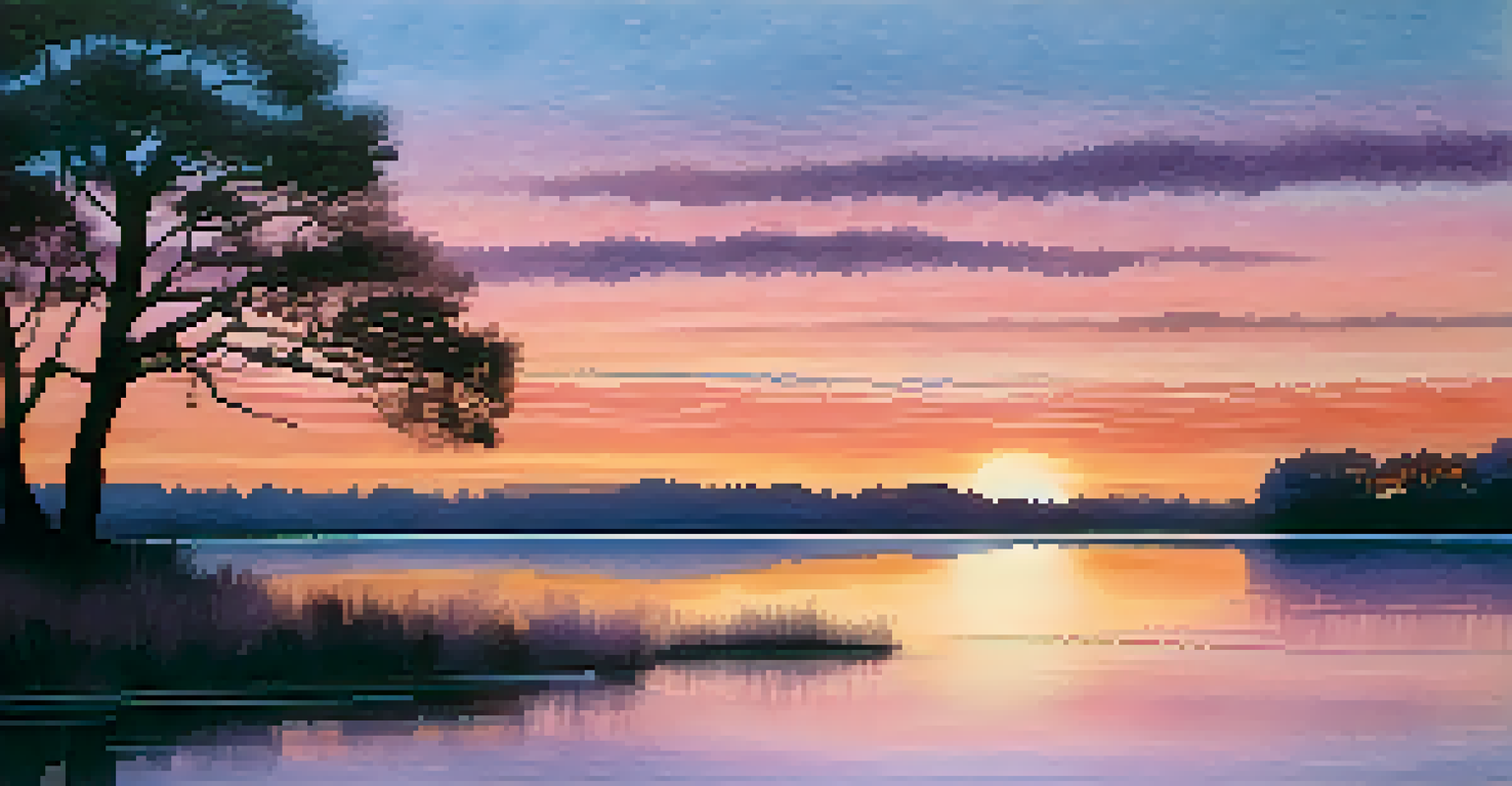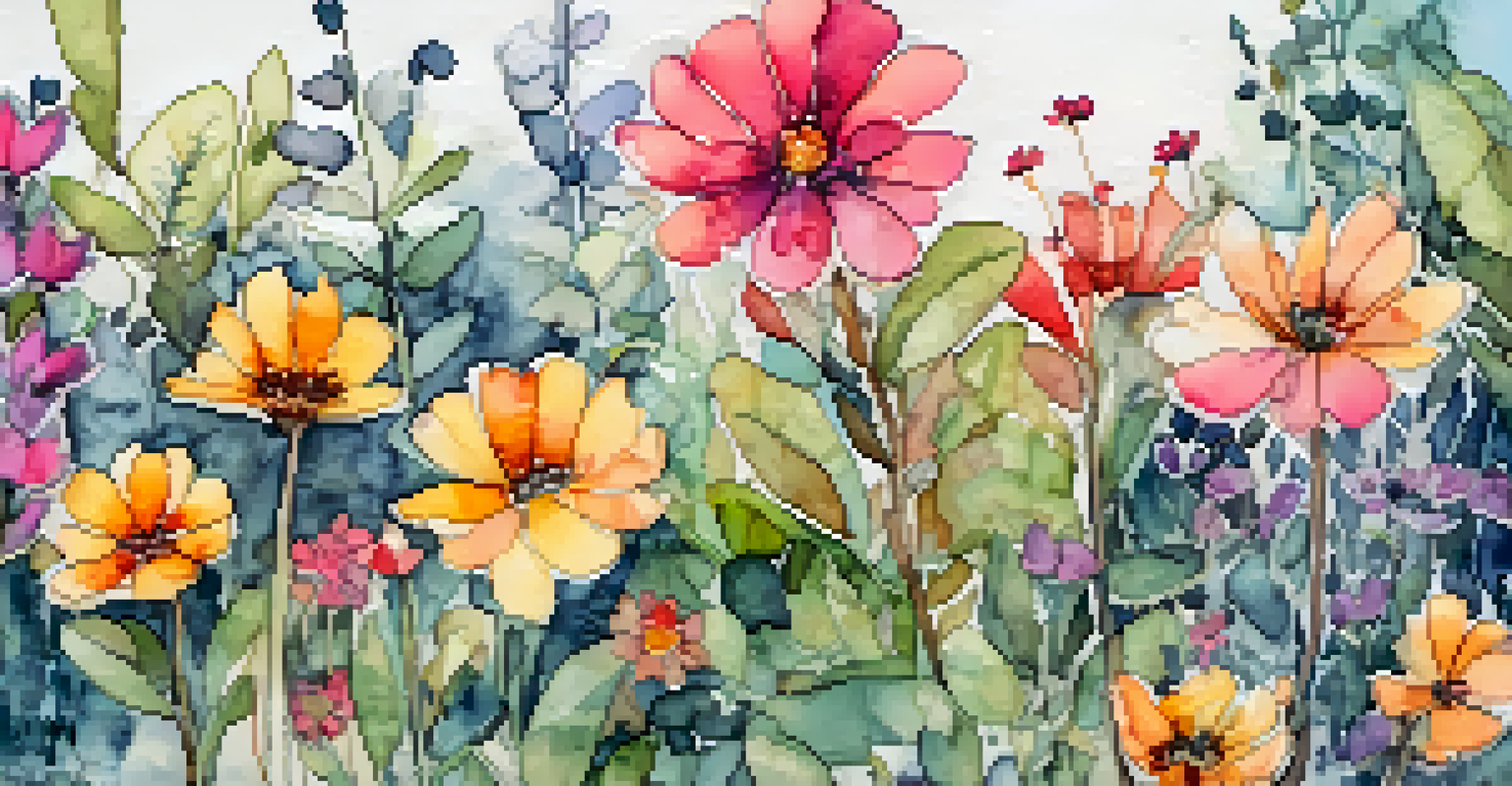Watercolor Techniques: Classes for Beginners and Experts

Understanding Watercolor Basics for Beginners
Watercolor painting is a beautiful art form that thrives on simplicity and fluidity. For beginners, grasping the basic concepts can be both exciting and daunting. Essential materials like watercolor paints, brushes, and paper play a crucial role in your initial experience, so it's worth investing time in understanding each component.
Every artist was first an amateur.
As you start your journey, familiarize yourself with techniques such as wet-on-wet and dry brush. The wet-on-wet technique involves applying wet paint onto wet paper, allowing colors to blend seamlessly. On the other hand, the dry brush technique creates texture and detail, making it perfect for adding intricate elements to your artwork.
Finding a beginner's class can provide you with hands-on experience and valuable feedback. These classes often introduce you to various styles and techniques, helping you discover what resonates with you while building your confidence in using watercolors.
Essential Tools Every Watercolor Artist Needs
Equipping yourself with the right tools is vital for creating stunning watercolor pieces. Quality brushes, paints, and paper can significantly affect your results, so it's essential to know what to look for. Round brushes are great for detail work, while flat brushes can cover larger areas efficiently.

Watercolor paper is another critical component, and it comes in various textures and weights. Cold-pressed paper offers a textured surface ideal for layering colors, while hot-pressed paper is smooth and perfect for fine details. Investing in good-quality paper can elevate your work and enhance the overall experience.
Mastering Watercolor Basics
Understanding essential techniques and materials is crucial for beginners to create beautiful watercolor art.
Additionally, palettes and water containers are essential for mixing and rinsing your brushes. A well-organized workspace not only makes painting more enjoyable but also encourages creativity, allowing you to focus on your artistic expression without distractions.
Exploring Advanced Watercolor Techniques
Once you’ve grasped the basics, diving into advanced watercolor techniques can be exhilarating. Techniques such as glazing and masking allow you to add depth and complexity to your artwork. Glazing, which involves applying transparent layers of color, can create stunning visual effects when done correctly.
Color is the keyboard, the eyes are the harmonies, the soul is the piano with many strings.
Masking is another technique that protects areas of your painting while you work on others. Using special masking fluid, you can preserve white spaces or lighter colors, ensuring they remain untouched as you build up layers. This allows for more intricate designs and can significantly enhance your compositions.
Many advanced classes focus on these techniques, providing you with the guidance needed to refine your skills. Exploring new methods not only broadens your artistic palette but also helps you develop your unique style as you experiment and create.
The Importance of Color Theory in Watercolor Painting
Color theory is a fundamental aspect of watercolor painting that every artist should understand. Knowing how colors interact with one another can drastically improve your paintings. The color wheel is a helpful tool that illustrates primary, secondary, and tertiary colors, making it easier to choose harmonious palettes.
Understanding warm and cool colors can also influence the mood of your artwork. Warm colors like reds and yellows can evoke energy and warmth, while cool colors like blues and greens can create calm and tranquility. By mastering these concepts, you'll be better equipped to convey emotions through your use of color.
Explore Advanced Techniques
Diving into advanced methods like glazing and masking can enhance your artwork and develop your unique style.
Many watercolor classes incorporate color theory into their curriculum, allowing you to practice and experiment with different combinations. This knowledge empowers you to make intentional choices in your artwork, ultimately enhancing your overall creative expression.
Finding the Right Watercolor Class for Your Skill Level
With numerous watercolor classes available, it’s essential to find one that suits your skill level. Beginner classes often focus on foundational techniques and materials, while advanced classes delve into specific styles and complex methods. Researching local art schools or community centers can help you discover the right fit for your needs.
Online classes have also become increasingly popular, offering flexibility and a wide range of topics. Many platforms provide detailed descriptions and reviews, making it easier to choose the right instructor. This option is perfect for those with busy schedules who still want to explore their artistic potential.
Whether you prefer in-person or online classes, the key is to find an environment that fosters creativity and growth. Engaging with fellow artists can provide inspiration and motivation, making the learning experience even more rewarding.
Incorporating Mixed Media into Your Watercolor Art
Mixed media techniques can take your watercolor artwork to the next level. By combining watercolors with other materials like ink, charcoal, or collage, you can add unique textures and dimensions to your pieces. This approach allows for greater creativity and experimentation, encouraging you to break traditional boundaries.
For instance, using ink pens for outlining can create striking contrasts against soft watercolor washes. Similarly, incorporating textured paper or fabric can add an interesting tactile element to your work. Mixed media not only enhances your artistic expression but also keeps the creative process fresh and exciting.
Build Your Watercolor Portfolio
Curating a diverse portfolio showcases your skills and artistic journey, helping you connect with a broader audience.
Many artists find that mixed media classes inspire them to explore new directions in their work. Engaging with different materials expands your skill set and opens up new avenues for creativity, making your watercolor journey even more fulfilling.
Tips for Building Your Watercolor Portfolio
Building a portfolio is an essential step for any artist looking to showcase their work. As you create new pieces, documenting your progress can help you track your development and identify your unique style. A well-curated portfolio should reflect your best work and demonstrate your versatility as an artist.
Consider including a mix of completed pieces, sketches, and experimental works. This variety not only showcases your skills but also tells a story about your artistic journey. Online platforms, social media, and personal websites are excellent ways to present your portfolio to a broader audience.

Joining local art shows or exhibitions can also provide valuable opportunities to display your work. Networking with other artists and art enthusiasts can lead to potential collaborations and even sales, further enhancing your artistic career and boosting your confidence in sharing your creations.